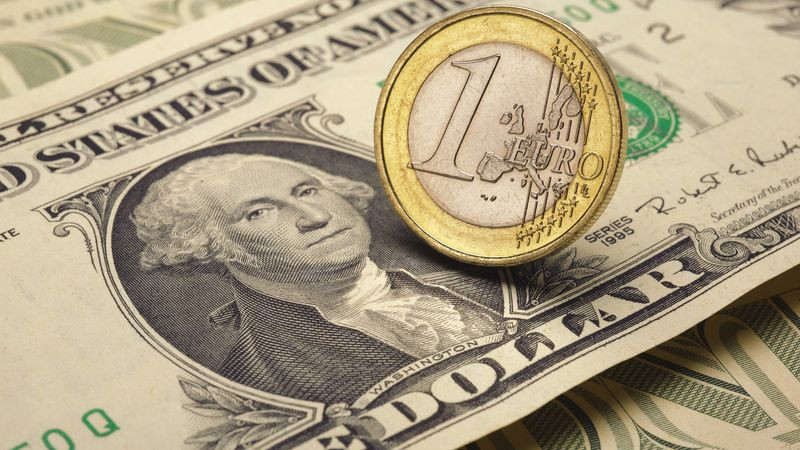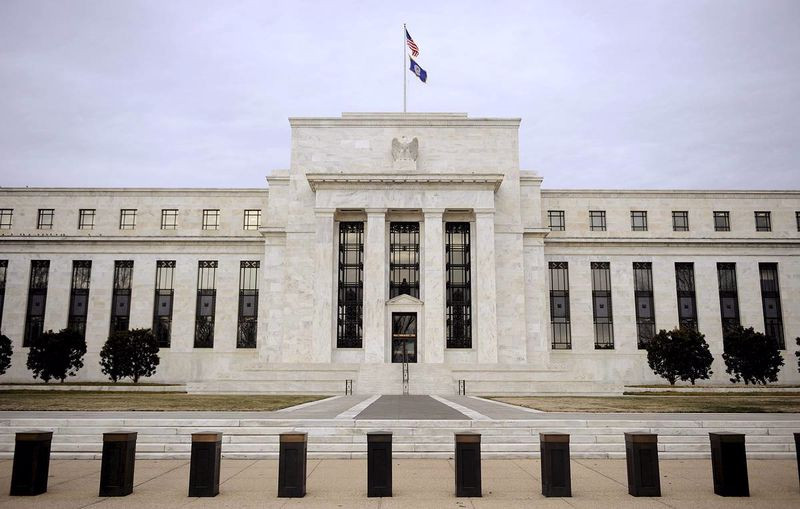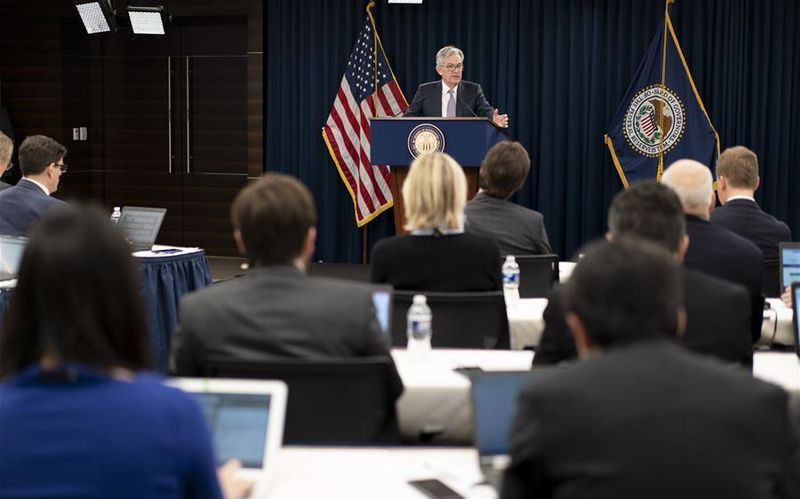
This week, the market is focused on inflation and consumer spending in the United States, which may become the missing link in the Federal Reserve's puzzle to reduce QE, as well as test the sustainability of the USD rally.
Investors largely ignored the weak US employment report for September and continue to wait for the Fed to take rather decisive action, believing that the central bank will announce the curtailment of stimulus measures in November, followed by an increase in interest rates in 2022.
The futures market estimated the probability of a 50/50 increase in the federal funds rate by July 2022 after FOMC representatives made a comment the day before that the US economy had recovered sufficiently for the central bank to begin winding down the asset purchase program.
"Personally, I believe that the condition for significant further progress in relation to our mandate on price stability has already been more than fulfilled, and a similar condition in relation to our mandate on the unemployment rate is almost fulfilled," said Fed Vice Chairman Richard Clarida.
The head of the Federal Reserve Bank of Atlanta, Rafael Bostic, in turn, said that the latest data on the number of jobs in the United States should not be an obstacle to curtailing QE.
"It will suit me if this process starts in November," he said.
Bostic is also waiting for a rate hike in 2022 and remains "ready" in case the US central bank has to act faster next year.
At the same time, most Fed policymakers continue to argue that inflationary pressure will be temporary.

"The core inflation rate in the United States remains close to our long-term goal of 2%. I think that the undesirable surge in inflation this year, as soon as the relative price adjustment is completed and the bottlenecks in the supply chains are eliminated, will eventually turn out to be largely temporary," said R. Clarida, Vice Chairman of the Federal Reserve.
Meanwhile, European Central Bank Governing Council member Francois Villeroy de Galo said that the central bank risks not reaching its inflation target for 2023, which is 2%. His comments continued to put pressure on the euro, which reached the lowest values against the US dollar in almost 15 months around $1.1522.
It took the EUR/USD pair less than a week to break down the range in which it has been consolidating since last Wednesday. But even taking into account yesterday's movement, this is not a clear breakdown, since the new low was only a few points below last week's low. A fall to the next significant support level at 1.1300 will require a breakthrough of the psychologically important mark at 1.1500.
On the other hand, consolidation above the level of 1.1600 will allow us to talk about breaking the downward trend and launch a wider rebound, but for this the bulls will obviously have to try.
Experts identify a number of fundamental factors of the recent weakness of the single currency.
Firstly, the latest releases on the eurozone as a whole disappointed market participants. Business activity, the volume of orders in the manufacturing industry and the ZEW data turned out to be worse than expected.
Secondly, within the framework of the current monetary policy cycle, the ECB still looks lagging behind its G10 counterparts. Although in September, the central bank announced a reduction in the volume of assets repurchased under the PEPP program, its warnings about the undesirability of tightening policy too early led investors to believe that the ECB's key rate would be raised no earlier than the end of 2023. That is, it will happen much later than a similar step by the Fed.

The sharp rise in energy prices has increased concerns about inflation and spurred bets that the Fed may need to move faster to normalize policy than FOMC officials predict.
Long-term inflation expectations in the US, based on consumer surveys and market indicators, are likely to continue to rise, given their sensitivity to oil prices, according to Deutsche Bank.
"Since the FOMC reacted to inflation data above expectations earlier this year, we now expect that the more stable nature of this inflationary dynamics will force it to raise rates in December 2022," the bank's strategists noted.
They predict three increases in the federal funds rate in 2023, and then three more rounds in 2024, as a result of which the rate will reach the level of 1.9%.
Expectations regarding the imminent curtailment of the Fed's asset repurchase program allowed the USD index to update annual highs around 94.56 points on Tuesday, and the EUR/USD pair to rewrite its lows since July 2020.
However, the decline in the yield of 10-year treasuries from four-month peaks provoked the greenback to retreat, which became the main catalyst for the recovery of the EUR/USD pair.
The U.S. House of Representatives on Tuesday finally approved a law temporarily raising the limit on government borrowing to $28.9 trillion, pushing back the deadline for default on the national debt until December. This somewhat reduced the degree of tension that had previously put pressure on risky assets and support for the defensive dollar.
In addition, dollar bulls seem to have decided to take a breather in anticipation of the release of important US data, starting with today's consumer price index and ending with the retail sales report on Friday, which will give additional clues as to when the Fed may begin to wind down its stimulus.
"We've had a few months where US inflation figures have been pretty high, and we think that's definitely going to be the main topic this week," Silicon Valley Bank strategists said.
Since May, annual inflation in the United States has exceeded 5%, at the end of April the indicator was 4.2%, in March - 2.6%, at the end of January and February, annual consumer price growth was estimated at 1.4% and 1.7%, respectively.
The greenback remained under pressure, and the EUR/USD pair continued to rebound from multi-month lows after the US Department of Labor reported on Wednesday that in September consumer prices in the country rose to 5.4% in annual terms from 5.3% recorded in August, and on a monthly basis the indicator increased by 0.4%,
Analysts expected to see annual inflation at 5.3%, while monthly consumer prices were forecast to rise by 0.3%.

Market participants, apparently, have already taken into account the hawkish shift in the Fed's policy in quotes, however, a stronger than expected value of the US consumer price index in September is likely to force investors to reconsider the pace of reduction of asset purchases by the central bank. Moreover, the minutes from the September FOMC meeting may also highlight the central bank's willingness to downplay employment problems in favor of controlling inflation.
It should be recognized that the moderate weakness of the dollar against the background of the continuing decline in the yield of 10-year US Treasury bonds, rather contributes to the recovery of the EUR/USD pair than to the revival of interest in the single currency.
Although the greenback faced downward pressure and retreated from the new highs of 2021, marked on Tuesday, according to a number of experts, it will remain combative and continue to grow, so the current fall in the US currency should be regarded as a convenient opportunity to buy on the decline.
"The dollar has already reached the highs of the year, and we expect its further growth in the coming months. The USD is supported by inflation concerns and the optimistic dot chart of the Fed, presented at the end of September. The central bank may announce and begin curtailing QE in November and December," ING analysts said.
They predict that in the next two months, the greenback will strengthen by 2-3%, and the EUR/USD pair will decrease accordingly to 1.1300.
Credit Suisse strategists do not rule out the fall of the main currency pair in the area of 1.1020-1.1000.
"In the near future, we expect the EUR/USD pair to fall to the area of 1.1495-1.1493, where the March 2020 high and the Fibonacci retracement level by 50% are located. The pair may take a pause here, but eventually the decline will continue in the direction of the next support at 1.1290. This level should stand, but we still note the general downside risks and allocate the next support at 1.1020-1.1000. The resistance is located at 1.1643-1.1663, and it should restrain the bulls to maintain the current downside risks," they noted.





















